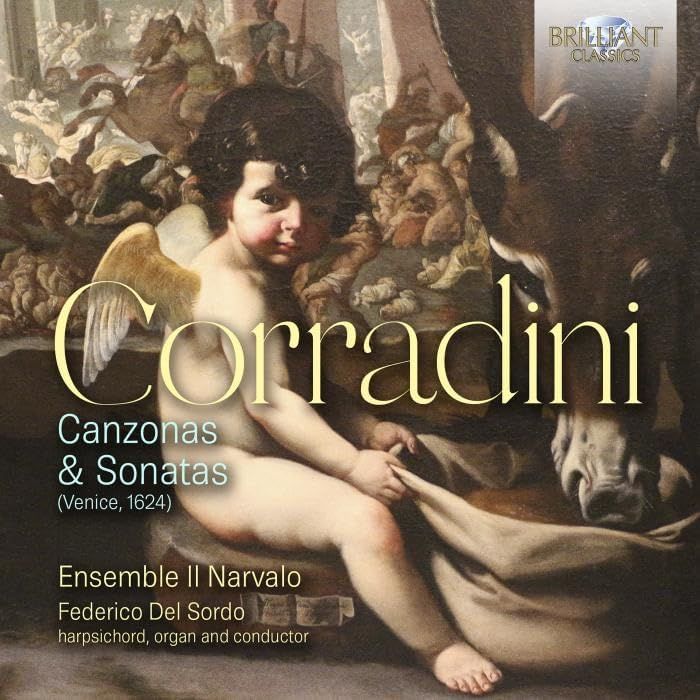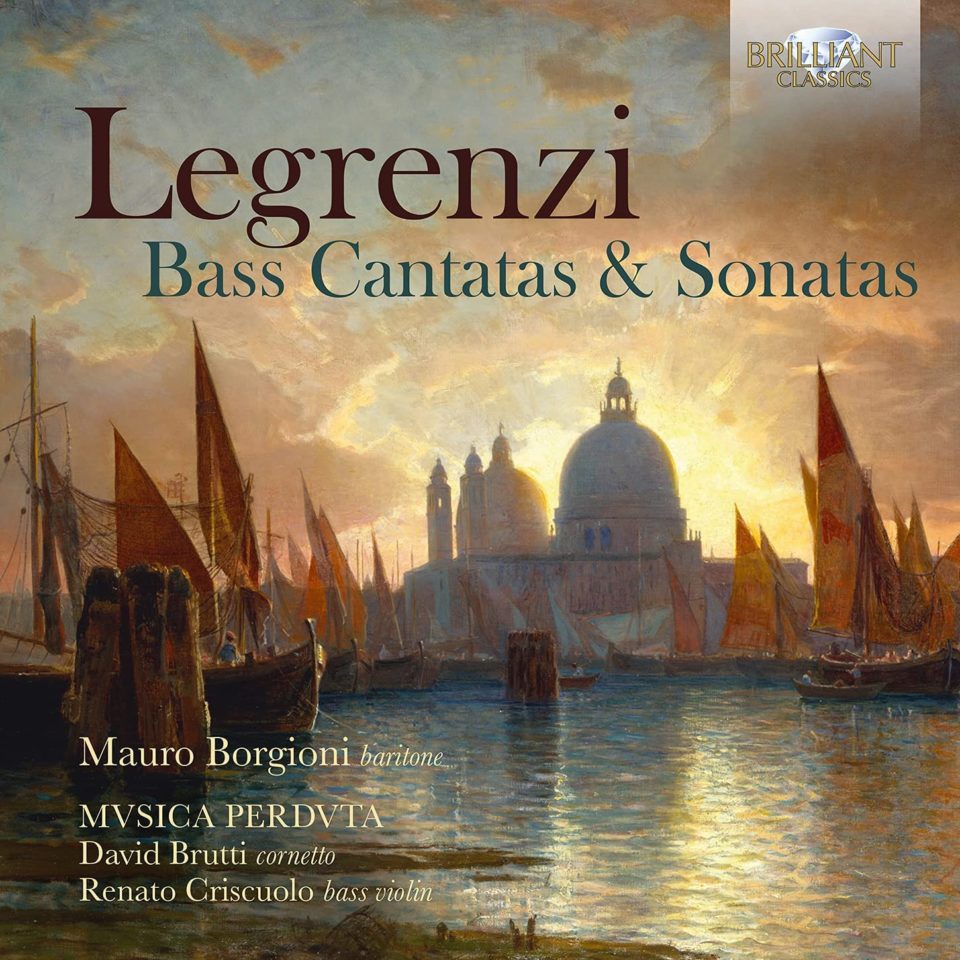Corradini: Canzonas & Sonatas
Works attributable with certainty to Nicolò Corradini (1585–1646) – likely from Cremona as opposed to Bergamo or Rome as erroneously suggested in the past – are limited to a few printed editions, among them the Primo libro de Canzoni francesi a 4 e alcune suonate (a copy of which has come down to us, printed by Gardano in Venice in 1624). It includes ten French canzonas and four sonatas, works most likely conceived to be performed by several instrumentalists, including one or more possible continuists (because of the speed of some passages and the separation between different parts of often more than an octave).
The canzonas are divided into several sections with structures ranging from simple A-B-A to more complex schemes (A-B-C-A-B-D in the Eighth Canzon); these short musical frameworks offer within them a great variety of themes, imitation between parts and repetitions of sections, ensuring cohesiveness of form.
The sonatas on the other hand – with the exception of the Suonata a tre (a simple A-B-C-D-A) – are presented in a more madrigalistic vein. The narrative pathway on which they are based passes through multiple melodic cues so completely different from one another as to suggest a rhetorical structure arching from an exordium to a final peroration. This leads to a proliferation of sections – A-B-C-D-E-F-G-H-I in the case of the Suonata a due cornetti in risposta. (The specification for two cornets “in call and response” contained in the title of this sonata corresponds to the numerous segments of this piece in which the same melody is first proposed by one performer and then repeated by the other.)
Ensemble Il Narvalo
Federico Del Sordo – harpsichord, organo & conductor
Romeo Ciuffa, Carolina Pace: recorders
Valerio Losito, Paolo Perrone: violins
Irene Caraba, Andrea Lattarulo: viole da gamba
David Brutti, Andrea Inghisciano: cornetti
Diego Leverić: archlute
Other information:
– Recorded September and November 2022 in Rome and Trevi, Italy
– Bilingual booklet in English and Italian contains liner notes by the Federico Del Sordo, and biographies of him and of the ensemble
– Nicolò Corradini was born in the late 16th century, and died in 1646. He spent most of his life in Cremona, the city where he was most likely born. Corradini received his early musical education from fellow Cremonese citizen Giovanni Battista Morsellino. In 1611 he was appointed organist of the Church of San Pietro in Cremona, and that same year he was also asked to accompany the Litanies of the Virgin, which were traditionally performed at Cremona Cathedral every Saturday and on all feast days dedicated to the Virgin Mary. In 1635 he took up the role of organist at the cathedral. Corradini’s works include a book of Madrigali a 5 et a 8 voci con Sinfonie di Viole (published in Venice in 1620).
– This new recording presents the Canzonas. In keeping with a custom that was widespread in the first half of the 16th century, most of the titles of these compositions refer to the surnames of families or illustrious personalities linked to Cremonese patronage. These rich instrumental works are played here using a lavish instrumental ensemble, including 2 violins, viola, recorder, cornet, gamba, theorbo, violone, organ, harpsichord and dulciana.
– Another enterprising recording by Federico Del Sordo, keyboard player and musicologist, never tired of discovering hidden gems from the Renaissance and Baroque of his native country Italy.
Track list:
Niccolò Corradini (1585 – 1646): Canzonas:
01 Corradini: Canzon prima – La Pallavicina
02 Corradini: Canzon seconda – La Sartirana
03 Corradini: Canzon terza – L’argenta
04 Corradini: Canzon quarta – La Sforza
05 Corradini: Canzon quinta – La Visconta
06 Corradini: Canzon sexta – La Sincopata
07 Corradini: Canzon settima – La Bizzarra
08 Corradini: Canzon ottava – La Treccha
09 Corradini: Canzon nona – La Pessa
10 Corradini: Canzon decima – La Taverna
Sonatas:
11 Corradini: Suonata a quattro, 2 bassi & 2 soprani – La Soragna
12 Corradini: Suonata a tre, basso; 2 soprani – La Marcha
Sonata:
13 Corradini: Suonata a due, basso; soprano – La Sfrondata
Sonata:
14 Corradini: Suonata a due cornetti in risposta – La Golferamma




